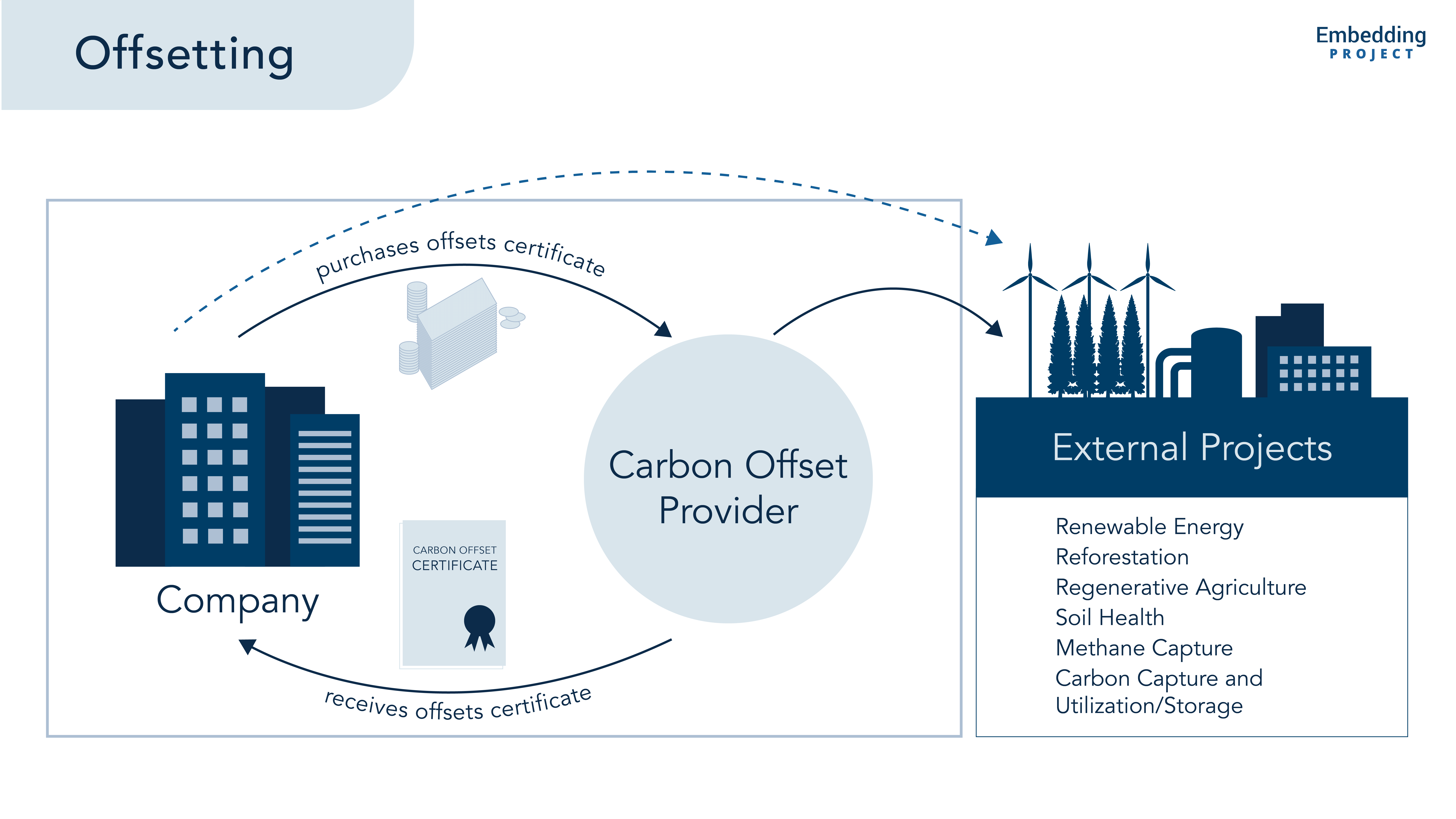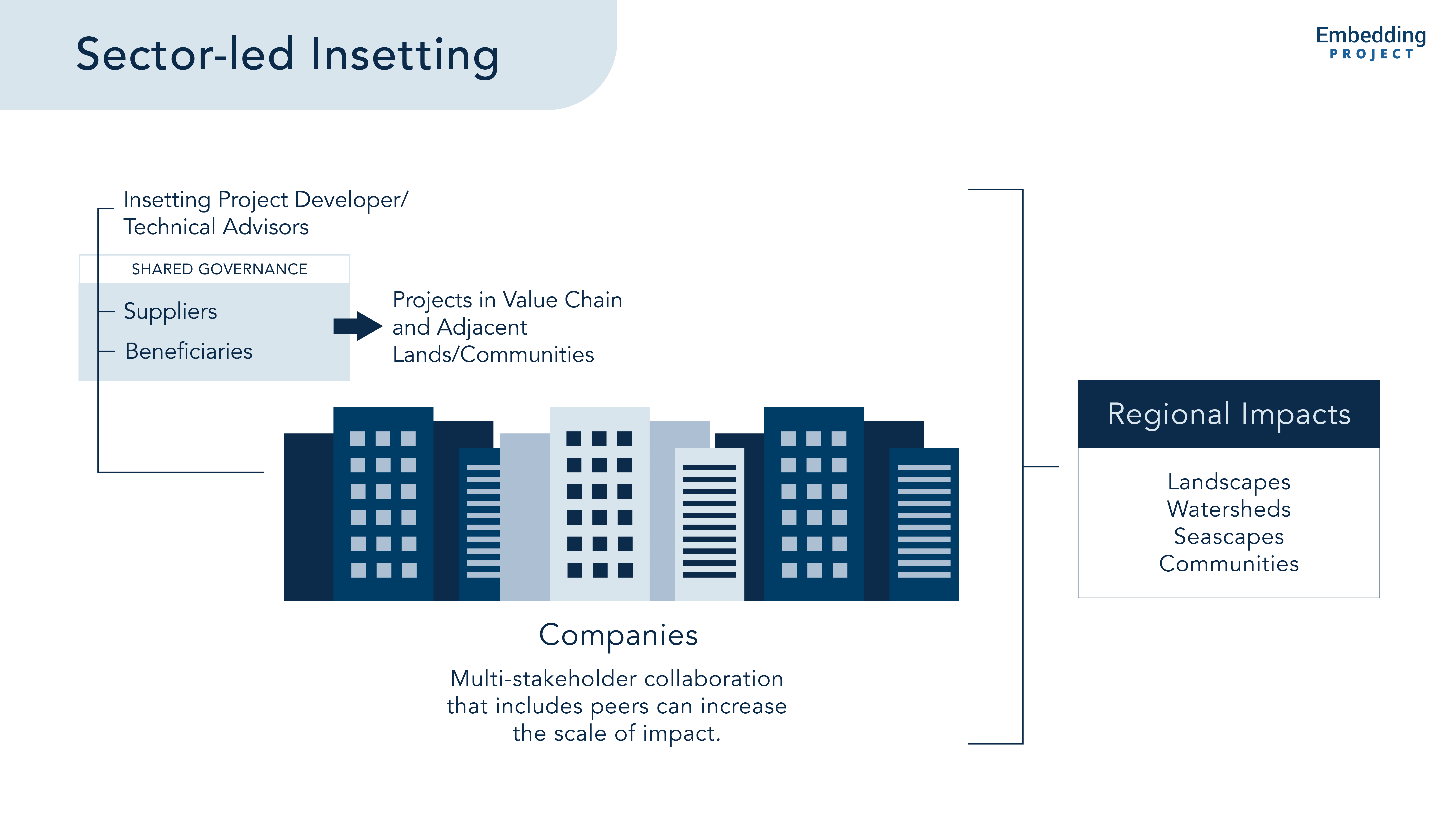Enter, Insetting: Supporting Carbon Reduction in Your Value Chain
Share this post on:LinkedIn

Image by Maddox Furlong on Unsplash.
In the first of our three-part blog series, we explained carbon offsets and credits and why companies may need to use them. In part two we explained common problems among offset projects and provided suggestions and insights to help you ensure the credibility of any offsets you may purchase. In this third and final post, we will explain carbon insetting – an emerging alternative that involves identifying and supporting emissions reduction within your own value chain.
What is carbon insetting, and how does it differ from offsetting?
As discussed in our first blog, carbon offsetting is a mechanism for companies to purchase credits from projects that create a reduction in CO2 emissions (or other greenhouse gases) in order to offset their own unavoidable emissions. These offset projects face growing skepticism for a number of reasons, including a lack of additionality and permanence, pervasive problems around double-counting, as well as violations of the rights of Indigenous Peoples and rural communities.

Insetting is an approach that tries to resolve some of these issues by developing carbon offset projects that connect to your own value chain. In other words, insetting involves the intentional reduction of your Scope 3 emissions by directing your resources to help your direct or indirect suppliers to reduce their Scope 1 and 2 emissions, or even their Scope 3 emissions. It’s a way for companies to support the resilience of the ecosystems and communities that they depend upon.1
Instead of financing carbon reduction projects that are unrelated to your business (as is the case with most offsetting projects), insetting interventions are co-created with upstream or downstream partners and communities, and ideally, are designed to account for the specific context – the risks, opportunities, impacts, and strategy – of the parties involved.
Early carbon insetting projects focused on identifying opportunities to avoid, reduce, or sequester emissions in land-based value chains through nature-based solutions2 – for instance, by helping smallholder farmers engage in crop diversification, ensure more reliable livelihoods, and improve soil health. These days, the range of applications is rapidly growing. For example, there is a wide variety of insetting projects (both in theory and practice) related to shipping and logistics that help supply chain members transition towards sustainable fuels; implement fleet renewal programs; retrofit engines; and install diesel particulate filters.3

To drive transformation, insetting strategies need to be long-term, make sense for your suppliers, and be responsive to local needs. By working directly with partners you already know and trust, your organisation can support emissions reduction and removal within your sourcing and manufacturing landscapes, your logistics network, among retailers and customers, or even through reducing waste, allowing you to deliberately strengthen your value chain, advance climate justice, and enhance community and ecosystem resilience.4
It is also worth noting that although global standards for verifying and certifying insetting projects are still in development, many companies that are developing and implementing insetting projects are choosing to work with independent auditors to verify and certify their results.5
What are the advantages of insetting?
On paper, both offsetting and insetting provide opportunities for companies to contribute to emissions reduction. However, insetting projects also enable companies to take a more holistic and integrated approach to climate action by directly linking their efforts to the resilience of communities and ecosystems they source from and sell to.6 This means that insetting, in addition to reducing emissions, can help shift transportation modes, improve worker wellbeing, restore natural carbon sinks and local watersheds, and reverse biodiversity loss. And when insetting is attentive to partnering with communities in the value chain, there is also the potential to support broader upskilling, training, and capacity-building; and increase the range of local economic opportunities.
Done well, insetting can help your business become more resilient in the face of interconnected environmental, social, and economic crises. It can also help your company to build closer and more meaningful relationships with your suppliers; this trust and transparency can translate to improved management and movement of resources, which can increase productivity and better ensure a stable supply of raw materials.7
What are some resources for learning more about insetting?
The International Platform for Insetting (IPI) is a business-led organisation that advocates for climate action at the source of global value chains. Their website features a comprehensive set of case studies, FAQs, a knowledge hub, and an insetting academy designed for facilitating knowledge exchange and interaction between practitioners.
They have also created a guide to share insights and provides recommendations that can help you to transform your supply chain for a resilient, regenerative, net zero carbon future that values and protects nature. The guide was created specifically for change agents and stakeholders who want to learn more about the concept, and it highlights lessons and opportunities for realising the full potential of insetting.
If you are interested in learning more about logistics-related insetting projects, the DHL Group and Smart Freight Center (a non-profit organisation dedicated to sustainable freight) developed a white paper that recommends innovative approaches to allocating funds towards decarbonization projects, and highlights a number of innovative opportunities for insetting in logistics.8
Ensuring that insetting meets its aims
Similar to carbon offsetting, insetting is just one piece in the carbon reduction puzzle. It introduces an exciting range of opportunities, but challenges and issues remain.
There is not (yet) a broad and mature range of case studies or standardised accounting methods, and – like with offsetting – credible, independent auditing and certification measures are still being developed.9 It is important for these issues to be addressed to ensure that insetting does not fall prey to some of the shortcomings of the current offset market.
It is also important to consider power dynamics and paternalism, especially when it comes to deciding who gets to claim the carbon credits. While multiple companies can claim Scope 3 reductions, only one company can claim the carbon credit as a Scope 1 or 2 reduction. Will your insetting efforts be logged against your Scope 3 commitments? Will you claim the reductions from your insetting project as a credit for your Scope 1 and 2 emissions? If so, what kind of pressure would this place on your partners to reduce their emissions further? Is it reasonable – or even possible – to pursue such reductions?
If your company wants to claim the reductions from an insetting project as a carbon credit against your own Scope 1 and 2 emissions, there must be transparency around this – with your value chain partners, with community stakeholders, and with your disclosure-relevant audiences. All of this needs to be negotiated openly and fairly.
It is also worth noting that purchasing carbon offsets generally involves paying for the results of something that has already been completed, whereas insetting involves long timeframes that must be accounted for. This means your company may need to carefully structure its financing to ensure interim milestones are met before any long-term results are reported.

Finally, the real power of insetting may lie in the ability to scale interventions to the level of regions, communities, watersheds, and biomes. Insetting benefits from collaboration, and creates a space for aligned action on climate targets and goals. Similar to how businesses are banding together within and across sectors and pursuing multi-party power purchasing agreements (PPAs) or renewable energy certificates (RECs), you may find it helpful to combine your insetting efforts with industry peers to reduce the resource, capability, and financial viability gap, especially in cases where you share suppliers, sourcing regions, and logistics networks.
To learn more about climate change, and what your company can do to curb emissions, explore our curated resources.
Image by Maddox Furlong on Unsplash. Graphics by Embedding Project.
Footnotes
1 The Insetting Platform, last accessed 15 July 2022, https://www.insettingplatform.com/insetting-explained/
2 The Insetting Platform, last accessed 15 July 2022, https://www.insettingplatform.com/insetting-explained/
3 “Your Starter Guide to Carbon Insetting: Reducing Emissions in the Transportation Industry.” GoodShipping, n.d., https://goodshipping.com/2021/04/13/your-starter-guide-to-carbon-insetting-reducing-emissions-in-the-transportation-industry/
4 Joy, Elizabeth. “Carbon Insetting Explained: What Carbon Insets Are and How They’re Different from Offsets.”Conscious Life and Style, 24 February 2020, https://www.consciouslifeandstyle.com/carbon-insetting/
5 The Insetting Platform, last accessed 15 July 2022, https://www.insettingplatform.com/insetting-explained/
6 The Insetting Platform, last accessed 15 July 2022, https://www.insettingplatform.com/insetting-explained/
7 The Insetting Platform, last accessed 15 July 2022, https://www.insettingplatform.com/insetting-explained/
8 Greene, Suzanne et al. “Carbon Insets for the Logistics Sector.” Smart Freight Centre, November 2020, https://www.dpdhl.com/content/dam/dpdhl/en/media-center/media-relations/documents/2020/dgf-carbon-insets-white-paper-smart-freight.pdf
9 The Insetting Platform, last accessed 15 July 2022, https://www.insettingplatform.com/insetting-explained/